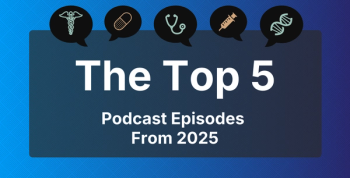
Report Offers Snapshot of Recent US Migraine Trends in Medication Use, Consultations
An analysis of data collected in 2018 shows that more work is needed to address unmet needs in episodic migraine.
Findings of the ObserVational survey of the Epidemiology, tReatment and Care Of MigrainE (OVERCOME) 2018 cohort published in
However, authors cautioned that unmet needs persist in this patient population, especially among those with episodic migraine, and highlighted the heterogeneity of this condition.
Migraine affects approximately 15% of the US population, and “monitoring patterns of consultation, diagnosis, and treatment provides a method for assessing the quality of ongoing medical care and identifying barriers to better outcomes,” researchers explained.
To help meet this goal, OVERCOME (US) was developed as a longitudinal, multicohort, web-based study. In the current report, authors outlined initial findings of the OVERCOME 2018 cohort baseline cross-sectional survey. The study includes both migraineurs and those without migraine who completed the survey between September and November of 2018.
All participants (n = 97,478) were at least 18 years old and of these, 21,143 individuals made up the migraine cohort (low frequency episodic migraine [LFEM], 12,299 [58.2%]; moderate frequency EM [MFEM], 4070 [19.2%]; high frequency EM [HFEM], 2291 [10.8%]; and chronic migraine [CM], 2483 [11.7%]).
Researchers set out to determine if those with 0 to 3 monthly headache days (LFEM) differed from the other patient cohorts (MFEM: 4-7 monthly headache days; HFEM: 8-14 monthly headache days; CM: ≥15 monthly headache days). The majority of respondents (74.2%) were women and the mean (SD) patient age was 42.2 (15) years.
Analyses of all migraineurs revealed:
- Having at least moderate disability was common (n = 8965; 42.4%).
- Around half (n = 10,783; 51.0%) had consulted a medical professional for migraine care in the past year.
- 4792 (22.7%) of respondents were currently using a triptan.
- 539 (40.4%) were eligible for migraine preventive medication.
- 3555 (16.8%) were currently using migraine preventive medication and this increased with higher monthly headache day frequency (LFEM, 13.2%; MFEM, 18.4%; HFEM, 20.4%; CM, 28.9%).
Data also showed that those with MFEM, HFEM, and CM were more likely to be female and identify as White compared with those with LFEM. Furthermore, “regarding lifetime consultation, those in the MFEM (84.6%), HFEM (85.0%), and CM (91.7%) categories were at least 1.99 times more likely to have consulted than LFEM (73.3%).”
Patients with MFEM, HFEM, and CM were around 1.5 times more likely to currently be using an opioid treatment and 1.48 times more likely to be currently using any migraine preventive medication compared with those with LFEM, respectively.
Researchers called the low number of consultations made by those with moderate or several migraine-related disability “concerning,” as “the high rates of consultation for reasons other than headache implies that most respondents have access to health care and yet are not regularly consulting for headache/migraine care.”
The modest relative number of neurologists and headache specialists in the United States, in addition to their uneven geographic distribution, could affect the number of patients seeking care. As such, migraine should be managed outside a neurologist’s or headache specialist’s office when possible, authors wrote.
Citing the limitations often faced by primary care providers, researchers added that “programs and initiatives aimed at fitting migraine care into a primary care provider’s practice and/or knowing when to refer could potentially increase ongoing consultation and treatment of migraine in primary care.”
An additional novel finding was the reported current use of nonsurgical neurostimulation (1.2%) and biobehavioral treatments (14.2%) among migraineurs. These included mindfulness, mediation, relaxation, and others.
Future studies are needed to evaluate patients with EM who are effectively managing migraine for the most part and may have a potential need for acute treatment, relative to those with significant disability.
The self-reported survey data included in the current analysis were not validated by a medical professional and may be susceptible to recall bias, marking a limitation.
Overall, “reports of an increase in preventive medication use (16.8%) relative to what was reported in [the American Migraine Prevalence and Prevention Study] (12%–13%) is encouraging,” authors concluded.
“OVERCOME (US) will continue to monitor this over time and see whether the addition of new preventive medications (CGRP [calcitonin gene-related peptide] monoclonal antibodies and small molecule antagonists) designed specifically for migraine with promising efficacy and accompanying efforts to raise awareness of the value of migraine prevention will reveal further gains in migraine preventive use,” they said.
Reference
Lipton RB, Nicholson RA, Reed ML, et al. Diagnosis, consultation, treatment, and impact of migraine in the US: results of the OVERCOME (US) study. Headache. Published online January 25, 2022. doi:10.1111/head.14259
Newsletter
Stay ahead of policy, cost, and value—subscribe to AJMC for expert insights at the intersection of clinical care and health economics.








































